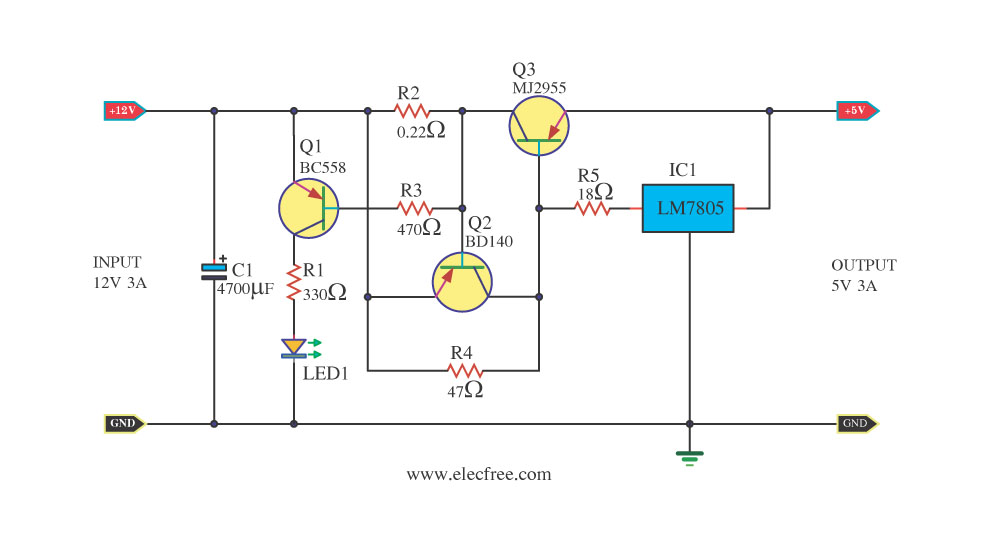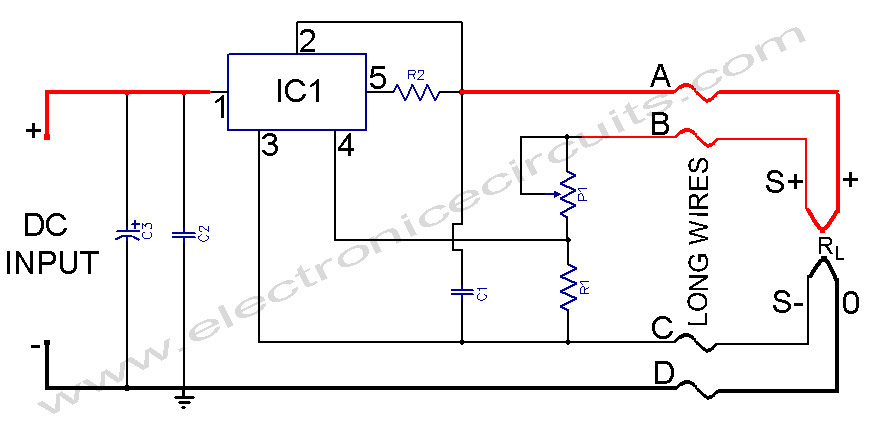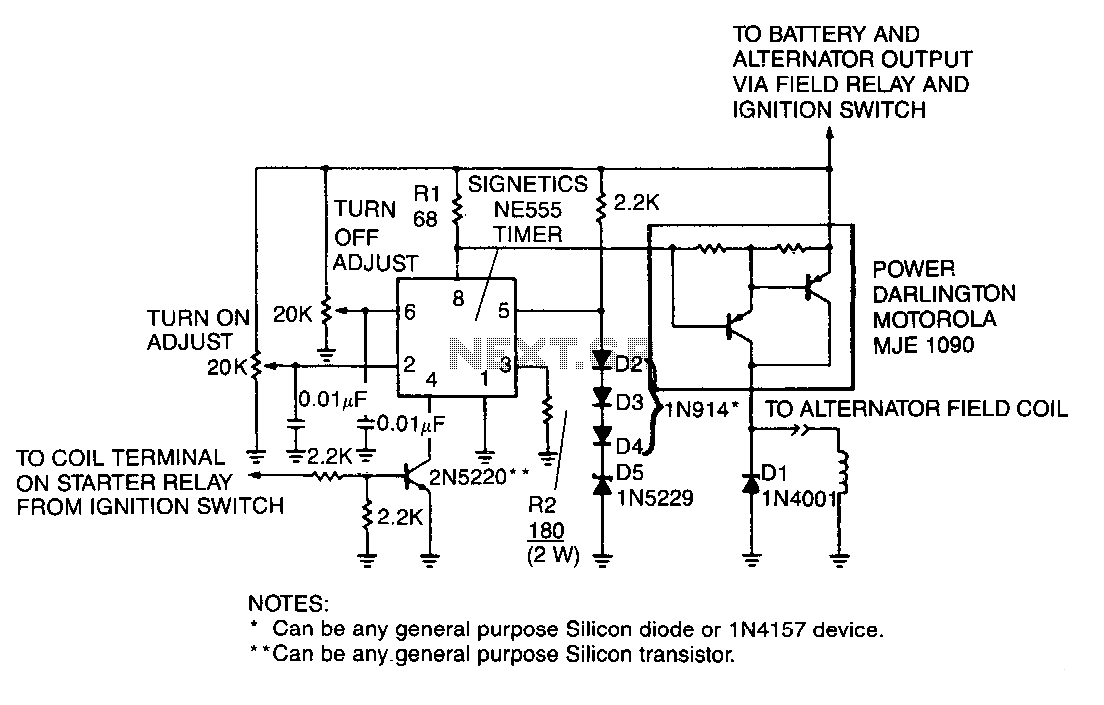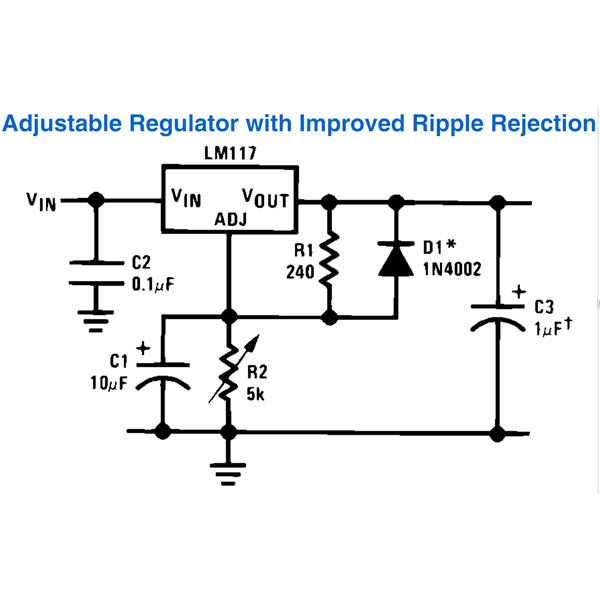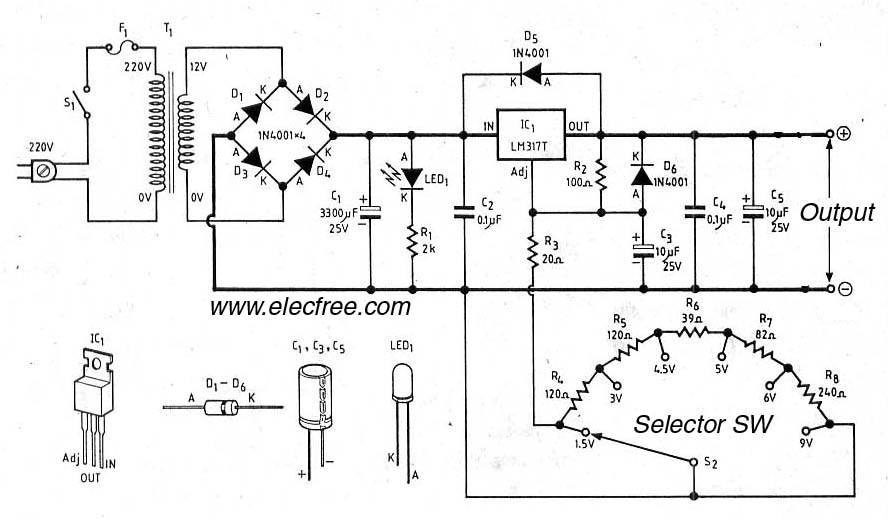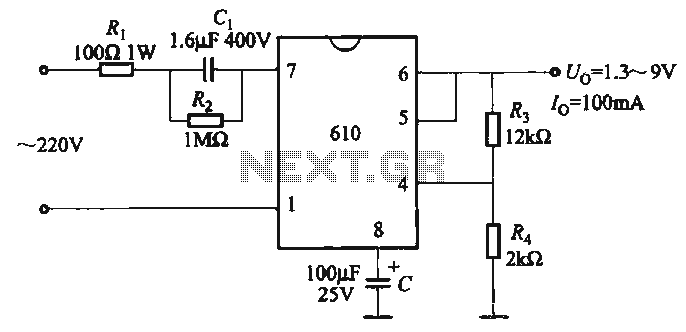
LM350 Regulator 3-Amp Adjustable
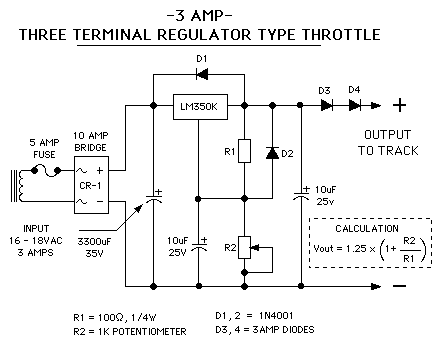
The circuit is designed to provide an output voltage range of approximately 1.25 to 13.5 volts when measured at the output.
This circuit likely employs a variable voltage regulator or a similar topology that allows for a wide range of output voltages. The design may include adjustable resistors or potentiometers to fine-tune the output voltage within the specified range.
In a typical configuration, the input voltage should be higher than the maximum output voltage to ensure proper regulation. This could be achieved using a power supply with an output voltage of at least 15 volts to accommodate the dropout voltage of the regulator.
The circuit may also incorporate bypass capacitors at the input and output to stabilize voltage levels and filter out noise. These capacitors should be chosen based on the frequency response requirements of the application.
In addition, the use of heat sinks may be necessary if the circuit is expected to handle higher currents, as voltage regulators can dissipate significant power when stepping down voltage. The thermal performance of the device should be considered during design to prevent overheating.
The output voltage can be monitored using a multimeter or oscilloscope to ensure it operates within the desired range. Proper layout and grounding techniques should be employed to minimize electromagnetic interference and ensure stable operation.
Overall, this circuit is versatile and can be utilized in various applications, including power supplies for sensors, microcontrollers, or other electronic devices requiring a stable voltage source.With the component values shown the circuit is designed to have and output voltage range of approximately 1.25 to 13.5 Volts when measured at the output of the.. 🔗 External reference
This circuit likely employs a variable voltage regulator or a similar topology that allows for a wide range of output voltages. The design may include adjustable resistors or potentiometers to fine-tune the output voltage within the specified range.
In a typical configuration, the input voltage should be higher than the maximum output voltage to ensure proper regulation. This could be achieved using a power supply with an output voltage of at least 15 volts to accommodate the dropout voltage of the regulator.
The circuit may also incorporate bypass capacitors at the input and output to stabilize voltage levels and filter out noise. These capacitors should be chosen based on the frequency response requirements of the application.
In addition, the use of heat sinks may be necessary if the circuit is expected to handle higher currents, as voltage regulators can dissipate significant power when stepping down voltage. The thermal performance of the device should be considered during design to prevent overheating.
The output voltage can be monitored using a multimeter or oscilloscope to ensure it operates within the desired range. Proper layout and grounding techniques should be employed to minimize electromagnetic interference and ensure stable operation.
Overall, this circuit is versatile and can be utilized in various applications, including power supplies for sensors, microcontrollers, or other electronic devices requiring a stable voltage source.With the component values shown the circuit is designed to have and output voltage range of approximately 1.25 to 13.5 Volts when measured at the output of the.. 🔗 External reference
